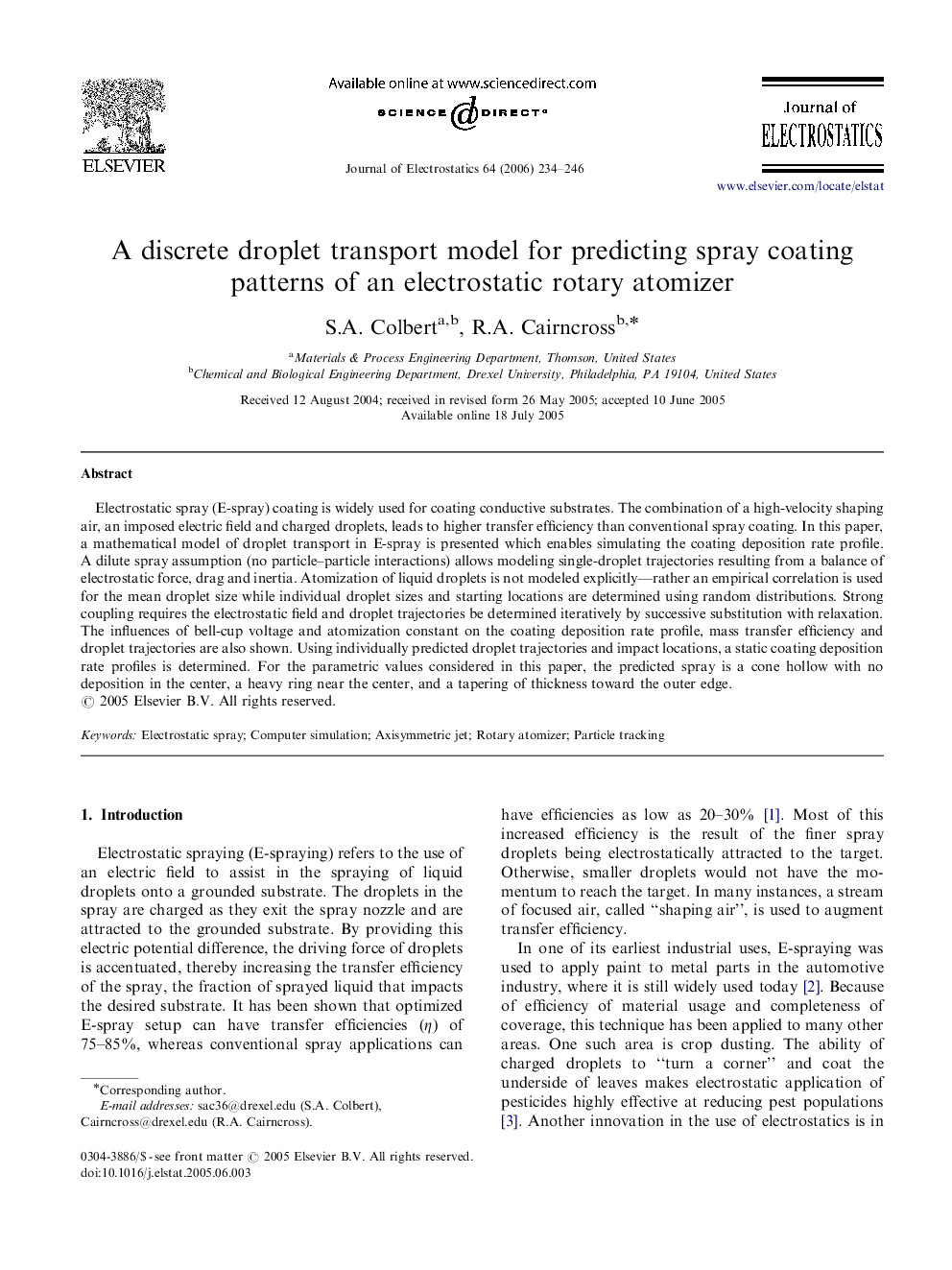| Article ID | Journal | Published Year | Pages | File Type |
|---|---|---|---|---|
| 726144 | Journal of Electrostatics | 2006 | 13 Pages |
Electrostatic spray (E-spray) coating is widely used for coating conductive substrates. The combination of a high-velocity shaping air, an imposed electric field and charged droplets, leads to higher transfer efficiency than conventional spray coating. In this paper, a mathematical model of droplet transport in E-spray is presented which enables simulating the coating deposition rate profile. A dilute spray assumption (no particle–particle interactions) allows modeling single-droplet trajectories resulting from a balance of electrostatic force, drag and inertia. Atomization of liquid droplets is not modeled explicitly—rather an empirical correlation is used for the mean droplet size while individual droplet sizes and starting locations are determined using random distributions. Strong coupling requires the electrostatic field and droplet trajectories be determined iteratively by successive substitution with relaxation. The influences of bell-cup voltage and atomization constant on the coating deposition rate profile, mass transfer efficiency and droplet trajectories are also shown. Using individually predicted droplet trajectories and impact locations, a static coating deposition rate profiles is determined. For the parametric values considered in this paper, the predicted spray is a cone hollow with no deposition in the center, a heavy ring near the center, and a tapering of thickness toward the outer edge.
